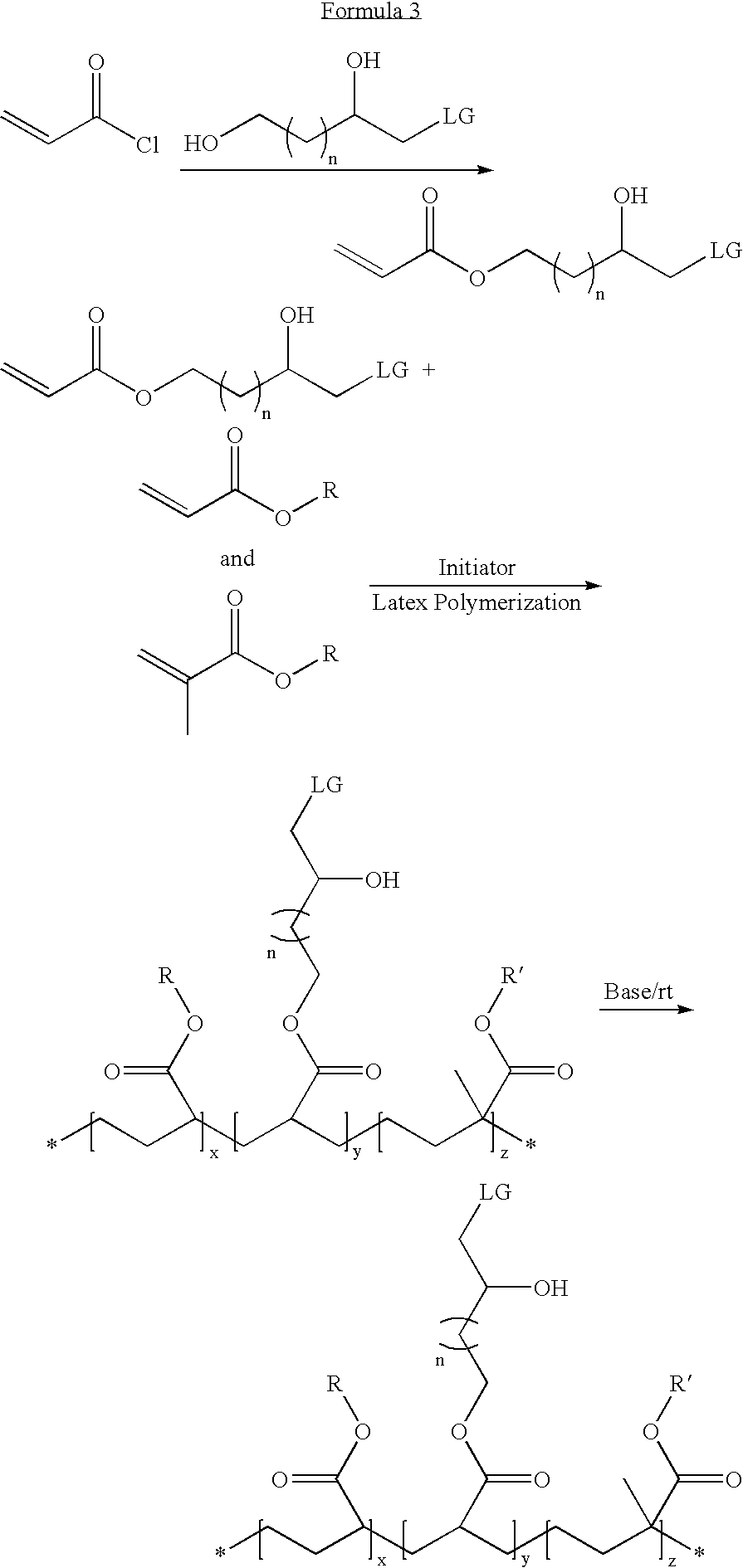Latex particulates with epoxide functional groups
a technology of functional groups and latex, applied in the field of surface functionalized latex particulates, can solve the problems of less stable colloids, and achieve the effects of improving water fastness, smear fastness, and/or light fastness
- Summary
- Abstract
- Description
- Claims
- Application Information
AI Technical Summary
Benefits of technology
Problems solved by technology
Method used
Image
Examples
example 1
Preparation of Epoxide Group-Forming Polymerizable Monomers
[0043] 1-cholro-2,4-dihydroxybutane is reacted with methacryloyl chloride at a 1:1 molar ratio in the presence of triethylamine to obtain a 1-chloro-2-hydroxybutyl methacrylate. This method resulted in the production of a polymerizable monomer having an epoxide group-forming monomer.
example 2
Preparation of Epoxide Group-Functionalized Latex Particulates
[0044] The polymerizable epoxide group-forming monomer (10 wt %) of Example 1 is mixed with methyl methacrylate (42 wt %), hexyl acrylate (42 wt %), and methacrylic acid (6 wt %) to form a monomer mixture. Though a cross-linker is not used in this example, it is to be noted that a cross-linker can be used, e.g., ethylene glycol dimethacrylate (0.5 wt % to 10 wt %). The monomer mixture (about 35 wt %) is emulsified with Rhodafac RS 710 surfactant (2.5 wt % with respect to the monomers) and a balance of water. The monomer emulsion is added drop wise to hot water containing a potassium persulfate water soluble initiator (about 0.4 wt % with respect to the monomers). The heating is continued for a period of two hours and then cooled to ambient temperature. The latex, in the form of a precursor, is neutralized and reacted with potassium hydroxide solution to obtain latex particulates having epoxide groups. The particulates fo...
example 3
Ink-Jet Ink Preparation
[0045] The latex emulsion prepared in accordance with Example 2 (equivalent to 2.5 g solid polymer) is mixed with a nucleophilic dye along with a liquid vehicle (20 g). The liquid vehicle includes water, 2-pyrrolidone, and ethylene glycol. The concentration of the dye is about 3 wt %. As the dye selected for use includes a nucleophilic group, the dye molecule reacts with the active ester of the latex particulates, thereby coupling at least a portion of the dye molecules to the latex particulates.
PUM
| Property | Measurement | Unit |
|---|---|---|
| Molecular weight | aaaaa | aaaaa |
| Molar ratio | aaaaa | aaaaa |
| Durability | aaaaa | aaaaa |
Abstract
Description
Claims
Application Information
 Login to View More
Login to View More - R&D
- Intellectual Property
- Life Sciences
- Materials
- Tech Scout
- Unparalleled Data Quality
- Higher Quality Content
- 60% Fewer Hallucinations
Browse by: Latest US Patents, China's latest patents, Technical Efficacy Thesaurus, Application Domain, Technology Topic, Popular Technical Reports.
© 2025 PatSnap. All rights reserved.Legal|Privacy policy|Modern Slavery Act Transparency Statement|Sitemap|About US| Contact US: help@patsnap.com



